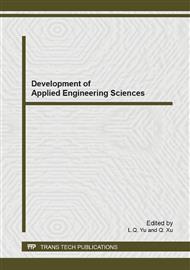p.518
p.522
p.526
p.532
p.536
p.540
p.544
p.548
p.553
Activation Factors and Sliding Mechanism of Ancient Landslide in Huale Coal Mine
Abstract:
This paper sets the ancient landslide in Huale coal mine in Guizhou as the research object. The in-situ geological exploration and field survey to determine the nature and activity history of the landslide; By using the methods of drilling and pitting, geology structure characteristics of the ancient landslide could be determined; the sliding surface is obtained by field sampling test, rock and soil physical and mechanical characteristic; Through rationally designed dip tube, the paper repeatedly monitors the underground displacement with the borehole inclinometer, mastered the ancient landslide slip surface sliding depth and the location. On this basis, the paper analyzes the activation factors and sliding mechanism of the ancient landslide. Direct cause of the activation of the ancient landslide is mine industrial site construction of the damage to the front of the ancient landslide. Ancient landslide sliding mechanism of the ancient landslide itself exists the weakness of sliding surface, the front is damaged due to landslide, leads to landslide.
Info:
Periodical:
Pages:
536-539
Citation:
Online since:
October 2014
Authors:
Price:
Сopyright:
© 2014 Trans Tech Publications Ltd. All Rights Reserved
Share:
Citation:


